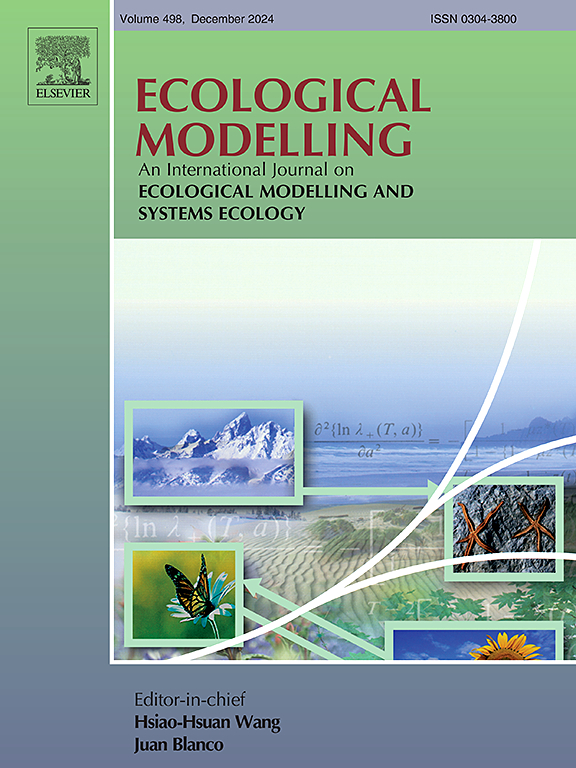Plant viability: Modeling the impacts of harvesting non-timber forest products in a fragmented landscape
IF 2.6
3区 环境科学与生态学
Q2 ECOLOGY
引用次数: 0
Abstract
In this paper, we develop a mathematical model to explore the impact of non-timber forest products (NTFPs) harvesting and fragmentation on the viability of plant populations, employing a meta-population framework. Our aim is to investigate how harvesting rates and patch connectivity influence harvest yield while ensuring population viability. Our findings indicate that sustainable harvesting rates can be explicitly determined for metapopulations composed of two patches, highlighting the influence of patch connectivity and dispersal rates on maximum sustainable yield (MSY). Notably, the MSY does not always increase with higher connectivity; instead, it may exhibit non-monotonic behavior depending on the dispersal rate. Additionally, under certain conditions, a suitable harvesting strategy may involve concentrating harvesting efforts on a single patch to ensure population regeneration. These insights underscore the importance of adaptable management strategies in the sustainable harvesting of NTFPs and the conservation of plant populations in fragmented habitats.
植物生存能力:模拟在破碎景观中采伐非木材林产品的影响
在本文中,我们建立了一个数学模型来探讨非木材林产品(NTFPs)采伐和破碎化对植物种群生存能力的影响,采用元种群框架。我们的目的是研究收获率和斑块连通性如何影响收获产量,同时确保种群生存能力。研究结果表明,由两个斑块组成的元种群的可持续收获率可以明确确定,突出了斑块连通性和分散率对最大可持续产量(MSY)的影响。值得注意的是,MSY并不总是随着连通性的提高而增加;相反,它可能表现出非单调的行为,这取决于扩散速率。此外,在一定条件下,适当的采伐策略可能包括将采伐努力集中在单个斑块上,以确保种群再生。这些见解强调了适应性管理战略在可持续采伐非森林保护区和保护分散生境中的植物种群方面的重要性。
本文章由计算机程序翻译,如有差异,请以英文原文为准。
求助全文
约1分钟内获得全文
求助全文
来源期刊

Ecological Modelling
环境科学-生态学
CiteScore
5.60
自引率
6.50%
发文量
259
审稿时长
69 days
期刊介绍:
The journal is concerned with the use of mathematical models and systems analysis for the description of ecological processes and for the sustainable management of resources. Human activity and well-being are dependent on and integrated with the functioning of ecosystems and the services they provide. We aim to understand these basic ecosystem functions using mathematical and conceptual modelling, systems analysis, thermodynamics, computer simulations, and ecological theory. This leads to a preference for process-based models embedded in theory with explicit causative agents as opposed to strictly statistical or correlative descriptions. These modelling methods can be applied to a wide spectrum of issues ranging from basic ecology to human ecology to socio-ecological systems. The journal welcomes research articles, short communications, review articles, letters to the editor, book reviews, and other communications. The journal also supports the activities of the [International Society of Ecological Modelling (ISEM)](http://www.isemna.org/).
 求助内容:
求助内容: 应助结果提醒方式:
应助结果提醒方式:


